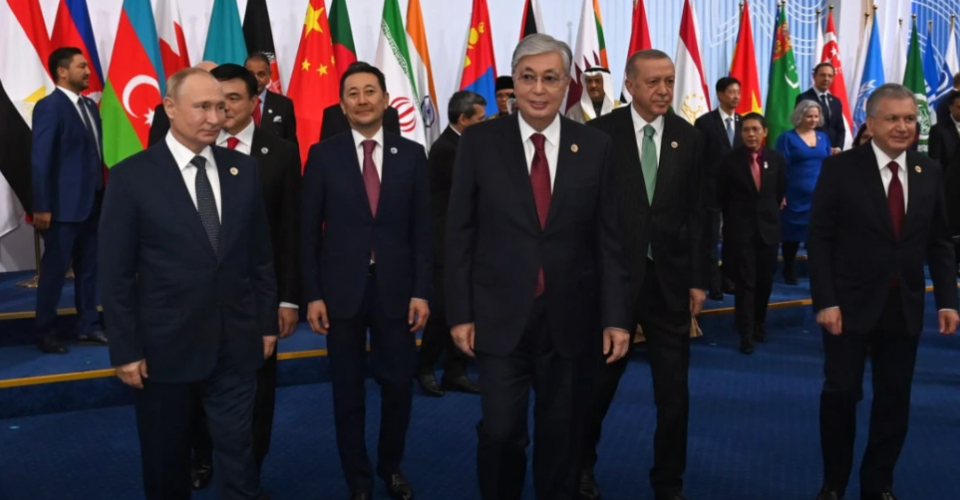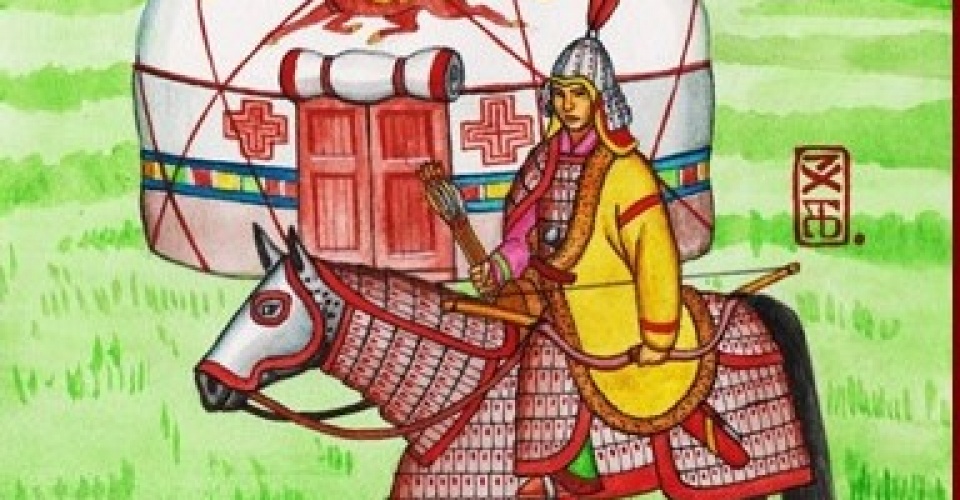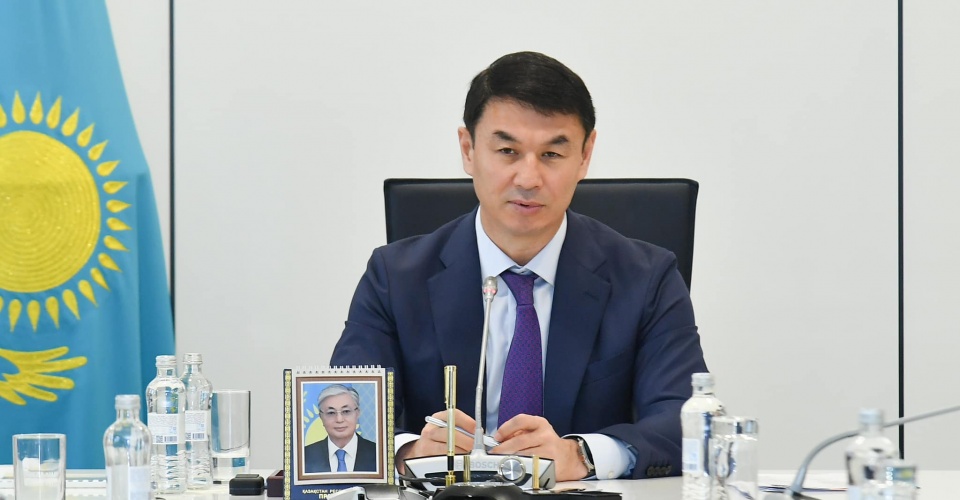March 20 is the birthday of Jumabek Akhmetuly Tashenov, a historical figure who made a significant contribution to the formation of Kazakhstan as a state and tirelessly worked for the preservation of the country.
Jumabek Akhmetuly Tashenov was born on March 20, 1915, in the village of Tanagul, Vishnev district, Akmolinsk region. He graduated from the Akmolinsk Railway Technical School and the Higher Party School of the Central Committee of the Communist Party of the Soviet Union, and was a candidate of economic sciences.
The name of this prominent statesman and political figure is forever written in the history of independent Kazakhstan. Books have been published about his life, and streets in cities such as Astana, Almaty, Shymkent, Petropavlovsk, and Kokshetau, as well as in some district centers, are named after him. He became a beloved figure even during his lifetime.
Throughout history, many brilliant personalities have disappeared without a trace, and the world has seen countless contradictory events. Many famous figures were belittled and humiliated for their loyalty to their homeland, people, and future generations. If we look at a particular period, during the Soviet era, Kazakhs faced severe repression from the central government, including being arrested without trial or investigation, deportation, and sometimes even death. Even during the “Khrushchyov thaw,” it was easy to remove individuals from their posts for opposing the central government, as frequently reported in Russian media. Jumabek Akhmetuly, of course, is one of the few patriots known for his courage, deep thinking, foresight, and determination to protect the interests of the republic. The legendary statesman’s name remains in the memory of the people alongside famous Kazakh heroes and national champions.
AFTER DEATH, STILL COMPETITION?
Seventy years ago, in January 1952, the young Jumabek Tashenov was elected first secretary of the regional party committee of the Aktyubinsk region. This marked the beginning of his rapid career advancement, and today many Kazakhs consider him to be one of the most prominent statesmen of the post-war period in the republic. Indeed, it is difficult to determine which of the legends and even myths about him can be considered the result of his unquestionable contributions and which are invented.
Only three years after being elected head of the Aktyubinsk region, the 40-year-old Tashenov became the chairman of the Presidium of the Supreme Soviet of the Kazakh SSR—officially the highest position in the republic (comparable to the president or head of state), though in practice, it was the third most important position. Five years later, he was appointed chairman of the Council of Ministers of Kazakhstan, the head of the government. In January 1960, Dzhinmuhammed Qonaev was elected first secretary of the Communist Party of Kazakhstan.
Was there hidden competition between them? Yes, it is quite possible that the younger (four years younger) and more ambitious Tashenov once dreamed of replacing Qonaev. And, in turn, Qonaev might have seen him as a rival. A year later, Tashenov was exiled and sent to Shymkent as deputy chairman of the regional executive committee. Shortly afterward, Qonaev’s position also fell (although not as dramatically as Tashenov’s, it certainly had a heavy impact on him). However, two years later, his star shone again: in October 1964, following the “party coup,” the removal of Nikita Khrushchev from power, and the rise of Leonid Brezhnev, Qonaev was reinstated as first secretary of the Central Committee. He would go on to lead the republic for more than twenty years.
Why is there now a trend to devalue Qonaev’s work while “heroizing” Tashenov? Perhaps there are several reasons for this. The first is the growing number of people in Kazakh society who view the Soviet era, particularly the period associated with Qonaev’s name, negatively. The second reason lies in the enduring compassion for the “victims of the regime” in our collective consciousness. Today, many people consider Tashenov to be such a victim. Finally, the third reason is that Tashenov, unlike many other representatives of the party-economic elite at the time, not only spoke fluent Kazakh but actively used the language and understood national traditions. In short, he was a “pure Kazakh,” while Qonaev was often seen as someone who did not fully embrace his Kazakh roots.
In general, it is possible to agree with the “heroization” or even idealization of Tashenov (he may indeed have been an exceptional personality, a true patriot, etc.). However, in many publications, documentaries, and books, he is depicted as infallible, and it is difficult to believe much of what has been written or said about him—especially by those who lived through the Soviet era and were familiar with its order and customs. Furthermore, the assessments are often based not on documentary evidence but on one person’s account or unverified assumptions. The authors’ clear subjectivity also plays a role, as is evident in the book “The Tiger on a Chain” dedicated to Tashenov, which portrays only his positive qualities while painting his rival Qonaev in entirely negative terms. In real life, such simplifications do not happen.
FABRICATED EVENTS ARE TEARS IN MY EYES…
The Russian-speaking audience can understand how many myths and legends have been created around Tashenov’s figure through the documentary “Light of the Past”, which aired on television and is now available on YouTube. The author or host, Zarina Mukhamedali, begins her story by recalling one of Abai Khan’s prophecies and then continues: “The colonial policy of the Russian Empire and the failed reforms of the Soviet Union left little of value for Independent Kazakhstan. But it could have been worse: under Khrushchev, Kazakhstan almost lost its territorial integrity. Today, we tell the story of a man who sacrificed his career and defended his homeland for the sake of future generations.”
Before diving into the main story of the hero’s life, the researcher of Tashenov’s life and work, Gulnar Kenzhebulatova, recalls past events. It is claimed that Tashenov fought for the preservation of all Kazakh newspapers, starting from Sotsialistik Kazakhstan, but there is no mention of who exactly initiated this step or when it happened. There are also no documents showing that such a threat existed. Indeed, it seems unimaginable that anyone would want to close Sotsialistik Kazakhstan—the republic’s main party publication, and thus, the most important ideological tool (especially given that television had only just appeared). Local Kazakh-language media were also mostly party-affiliated.
Another myth presented is that Tashenov called for the cessation of nuclear tests at the Semipalatinsk test site, and Khrushchev supposedly reassured him. In reality, nuclear weapons were a cornerstone of the USSR’s security in its competition with the US and the West. According to historians, for Khrushchev, this issue became a “fixed idea,” and he drastically reduced the military despite significant opposition from the armed forces.
The film’s authors also credit Tashenov for the rise of Kazakh workers to the rank of Hero of Socialist Labor. However, Kazakhs had been awarded this title long before him. For example, in the late 1940s, shepherd Yazylbek Kuanishbaev, rice grower Ybyray Zhakaev, horse breeder Niyetkali Junisov, and others received the award. By the time Tashenov had the opportunity to influence the award process, many Kazakhs had already received it. Furthermore, the 1959 Lenin Prize awarded to Mukhtar Auezov for his Abai Path novel was also attributed to Tashenov’s contributions, though the writer had already received the highest Stalin Prize ten years earlier.
The film also discusses Tashenov’s significant role in rehabilitating the victims of political repression. Given his position, he was obligated to lead the relevant commission, but did he act within the framework set by the central authorities, or did he take bold steps to restore the rights of the victims? No one has provided a clear answer to this.
The construction of the “Medeu” complex, the Kazakhstan Days in Moscow (1958), the Abai monument in the capital, the publication of Baurzhan Momysh-uly’s Za Nami Moskva, etc., are all things the film credits to Tashenov. While he certainly contributed, it is likely that other leaders of the Kazakh SSR also played a role. Interestingly, the Medeu ice rink was built in 1951, and the decision to build the artificial ice complex was made in 1970, meaning Tashenov had no involvement in the construction of the rink.
WAS THERE HEROISM?
Finally, regarding the “struggle for Kazakh land,” which has become the main theme of many writings and discussions about Tashenov. According to the documentary “Light of the Past,” he was involved in the decision to give parts of Southern Kazakhstan to Uzbekistan in the mid-1950s.



















